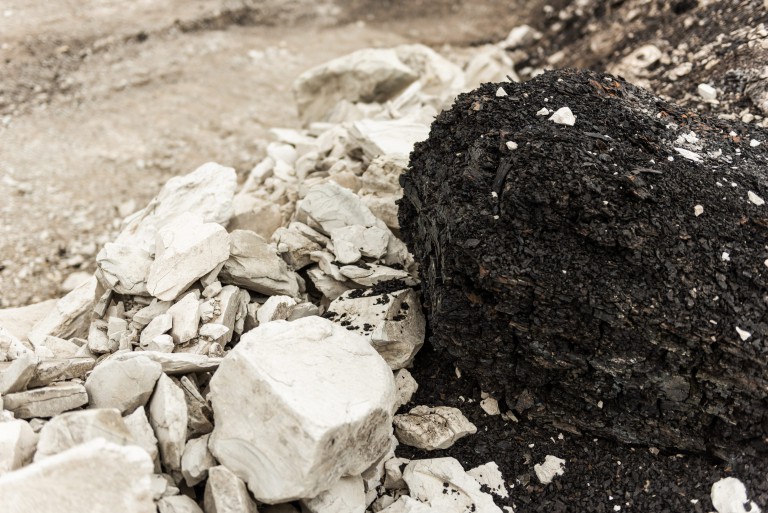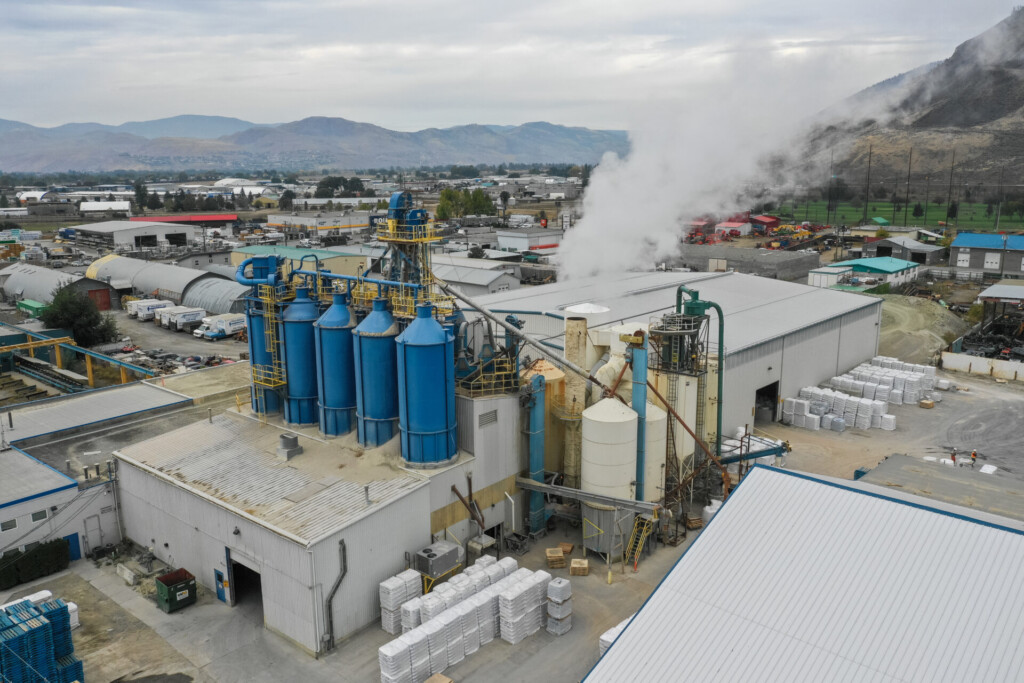October 28, 2010, VANCOUVER, B.C.
– ASHBURTON VENTURES INC.
(ABR-TSX:V) (ARB-FRANKFURT) (“Ashburtonâ€
or the “Companyâ€)
announces
further results from samples taken along the Upper Vein area of its Deep Creek
Project located 112 kilometres north of Elko, Nevada. The latest field program produced,
among other very notable results, a channel sample over one meter in width along
the furthest southern end of the Upper Vein assaying at 47.9 g/t gold which
appears to penetrate the softer clastic sedimentary units of the Paleozoic
Schoonover Formation. Numerous samples of vein material have been assayed as
shown in the table below.
This
new set of results has extended the Upper Vein southward for a total length of approximately
640 meters. The data has also revealed that the Upper Vein is actually a
network of veins occurring dominantly in the Precambrian McCoy Group
metasediments (see news release dated
October 14, 2010), but also extending southward into Paleozoic sedimentary
rocks identified as the Schoonover Formation.
In
addition to the Upper Vein sampling, a float sample of vein material was also taken
from above the Upper Vein area which assayed at 28.90 g/t gold. This result is
particularly encouraging, as it indicates that additional gold-bearing veins
must occur above the known trace of the Upper Vein.
“We
are very excited with Ashburton’s latest set of results at its Deep Creek
project in Nevada. The fact that the Upper Vein is now over 640 meters in
length and up to one meter in width, and that the country rock surrounding it
is also carrying gold values, is extremely encouraging,†states Mike England,
Company president. “In addition, float samples of vein material with high gold
values have been confirmed above the Upper Vein, meaning an additional gold-bearing
zone, or zones, are yet to be discovered.â€
Based
on the encouraging results of the Upper Vein area, a program of further
sampling, detailed structural mapping, and high resolution geophysics is
planned for the coming months, to aid in selecting targets for drilling in early
2011.
The
latest sampling program focused on obtaining assays northward for the Upper
Vein, and extending the Upper Vein southward through prospecting. The southward
prospecting identified the Upper Vein in poorly consolidated sedimentary rock
interpreted to be the Schoonover Formation. Two Upper Vein samples in the
Schoonover Formation have continuous widths of 1.0 and 1.2 meters, and gold
contents of 47.9 and 42.5 g/t Au, respectively.
Sampling
the Upper Vein northward proved to be difficult as the vein is poorly exposed
due to loose surface cover, but where possible, channel widths of 0.15 meter
were chiselled from the rock until sample weights exceeding one kilogram were
obtained. Discontinuous vein widths mostly less than one meter were assayed,
with values ranging from near detection limits up to 0.94 g/t Au. A summary of all assay results for the Upper
Vein is provided below, and a map showing their spatial distribution can be
viewed at www.ashburtonventures.com.
|
VEIN SAMPLES – UPPER VEIN AREA |
||
|
Au Content, (g/t) |
Sample Weight (kg) |
Approx. Vein Width (m) |
|
Latest Results |
||
|
47.9 |
3.04 |
1 |
|
42.5 |
2.34 |
1.2 |
|
0.94 |
6.34 |
0.9 |
|
0.73 |
5.78 |
0.9 |
|
0.72 |
4.54 |
0.9 |
|
0.56 |
4.2 |
1.5 |
|
0.52 |
6.33 |
<1 |
|
0.35 |
4.4 |
0.5 |
|
0.09 |
0.67 |
0.5 |
|
0.05 |
1.57 |
0.5 |
|
Reported on October 14, 2010 |
||
|
1180 |
1.78 |
<1 |
|
355 |
1.04 |
0.2 |
|
355 |
1.04 |
0.2 |
|
94.3 |
2.37 |
0.2 |
|
56.3 |
3.19 |
0.15 |
|
40.1 |
2.10 |
0.6 |
|
16.75 |
0.97 |
0.2 |
|
9.79 |
2.47 |
0.4 |
|
7.03 |
3.01 |
0.4 |
|
2.91 |
2.35 |
0.4 |
Company
geologists also chiseled composite bedrock channel samples northward in the
Upper Vein, from areas roughly 0.45-0.91 meters in length and 0.1-0.2 meters in
width along lines spaced approximately 20 meters apart over a total distance of
80 meters. Visible gold was not observed during collection, but assays up to 2.30
g/t Au were obtained.
Country
rock samples were also collected along the southward extension of the Upper
Vein, including one sample in highly variable lithologies of the Schoonover
Formation that are capped by Tertiary volcanics. A composite channel sample of
these variable lithologies returned a 0.1 g/t Au result, which suggests that
enhanced gold values may extend beneath the volcanics.
A
summary of all assay results for country rock and float in the Upper Vein area is
provided below, and a map showing their spatial distribution can be viewed at
www.ashburtonventures.com.
|
|
|||
|
|
|
|
|
|
|
|||
|
28.90 |
2.81 |
12 |
Float |
|
2.30 |
1.59 |
0.2 |
Country Rock |
|
2.10 |
7.1 |
1.8 |
Country Rock |
|
2.03 |
6.52 |
0.9 |
Country Rock |
|
1.59 |
6.15 |
0.9 |
Country Rock |
|
1.31 |
1.93 |
<1 |
Country Rock |
|
0.97 |
4.39 |
2.7 |
Country Rock |
|
0.89 |
4.74 |
0.9 |
Country Rock |
|
0.67 |
4.63 |
3.6 |
Country Rock |
|
0.35 |
5.4 |
0.9 |
Country Rock |
|
0.30 |
3.57 |
0.9 |
Country Rock |
|
0.14 |
6.7 |
0.9 |
Country Rock |
|
0.10 |
3.06 |
14 |
Country Rock |
|
0.05 |
4.24 |
0.9 |
Country Rock |
|
0.05 |
5.65 |
0.9 |
Country Rock |
|
0.02 |
5.04 |
0.9 |
Country Rock |
|
0.02 |
3.45 |
0.9 |
Country Rock |
|
|
|||
|
10.8 |
2.54 |
0.46 |
Country Rock |
Samples
are prepared and analyzed for gold by ALS Chemex Laboratories, North
Vancouver, British Columbia, using the
fire assay protocols Au-AA24, Au-AA25, and Au-GRA22 that provide detection
ranges of 0.005-10, 0.01-100 and 0.05-1000 ppm gold, respectively.
In
sampling the Upper Vein area, care has been undertaken to collect unbiased
representative samples, but samples containing coarse gold can have an inherent
nugget effect. For the most recent sampling in the Upper Vein area, samples in
which visible gold was noted or which appeared to have the potential for coarse
gold to be present, were subjected to the ALS Chemex protocol Au-SCR21. This
protocol assays the pulp and coarse fraction at a 100 micron square mesh
cutpoint to determine the total gold content of the sample. This assay approach
is considered industry best practice for samples suspected of having a coarse
gold component, and the reported results are the total gold contents using this
protocol.
The
technical contents of this release were approved by Ashburton director and
qualified person as defined by National Instrument 43-101, Dr. Tom McCandless,
P.Geo.
Ashburton
Ventures is a junior exploration company actively seeking mineral opportunities
for the benefit of all its stakeholders. For more information visit the
Company’s website located at www.ashburtonventures.com.
ON BEHALF OF THE BOARD
Michael England, President
For further
information contact:
Telephone:
(604) 683-3995
Forward-Looking Statement:
Some statements in this news release contain forward-looking information that
involves inherent risk and uncertainty affecting the business of Ashburton
Ventures Inc. Actual results may differ materially from those currently
anticipated in such statements. Neither the TSX Venture Exchange nor its
Regulation Services Provider (as that term is defined in the policies of the
TSX Venture Exchange) accepts responsibility for the adequacy or accuracy of
this release.


